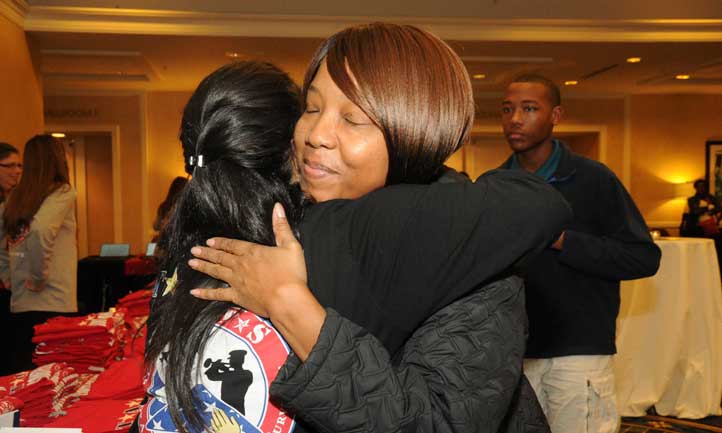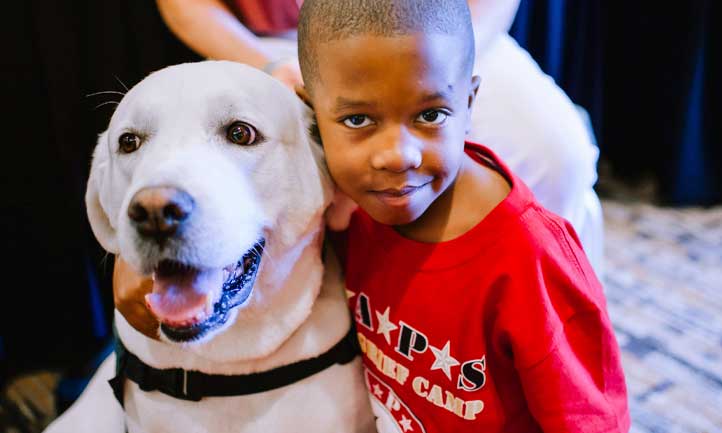Staying in Touch - Real Touch
Author: Alan Wolfelt
The COVID-19 pandemic has millions of people the world over realizing they are touch deprived. Even people who haven’t considered themselves huggy, touchy people in the past are now expressing awareness that they need the physical proximity and touch of other human beings to feel well, especially during times of uncertainty and anxiety.
As someone grieving the death of a loved one, you may have found yourself particularly challenged by social distancing requirements. You know that touch helps convey love and empathy. In general, grieving people who are hugged, touched, and visited often report feeling comforted and supported. They also experience that sense of connection that helps them continue to feel meaning and purpose in life.
If you’ve been having an even harder time with your grief in recent months, touch starvation may be one key reason. I hope this article will help you better understand your own personal need for touch and find effective ways to meet it, even as the pandemic continues.

The Power of Touch
Since touch is physical, it has bodily effects. When we are touched in comforting ways, our brains are flooded with dopamine, serotonin, and oxytocin. These feel-good hormones help regulate our mood and make us feel calmer and happier.
When we aren’t touched, on the other hand, our brains suffer from the lack of these chemicals. We may feel depressed, anxious, and stressed. We might also have more trouble sleeping.
In addition, touch stimulates the vagus nerve, which branches out through our entire bodies. Its role is to calm the nervous system, which in turn touch helps boost our immune systems and can lower our blood pressure and heart rate.
If you’ve been feeling depressed, anxious, or stressed; if you’ve been having sleep issues; or if you’ve felt unwell physically, lack of physical touch may be the culprit.
The Online Culture and Social Distancing
Of course, even before COVID, our culture was becoming more and more socially distanced. Instead of face-to-face contact, we have increasingly relied on technology as a main form of interface. Texting, emailing, and social media have become the primary ways of “keeping in touch”—even though, ironically, they involve no touching at all.
The social distancing of the pandemic has only heightened our reliance on technology. We’re grateful, of course, for the electronic means of maintaining connection. Without them, we’d be truly disconnected and utterly separated. But at the same time, we’re realizing their limitations.
Our high-tech, low-touch lifestyles aren’t enough. We need and crave physical human contact. We are skin hungry. We are eye-contact empty. We are touch starved.

Tips for Feeding your Touch Starvation
- Tell your family and friends about your need for touch. If you’re sheltering in place with others, talk to them about touch starvation and how you’re feeling. Maybe your roommates are craving touch as well. Depending on your relationships, hugs, shoulder rubs, scalp massages, back scratches, foot rubs, and handholding are possible outlets.
- If you’ve been isolated and need a hug, meet up outdoors with loved ones and, masks on, share some safe embraces. A 20-second hug is the threshold for alleviating stress and helping you feel calm and safe. Even without hugs, simply gathering outdoors to chat and having distanced face-to-face eye contact for an hour or two can make a big difference.
- If you can’t be near your loved ones right now, use video calls as the next best thing. Faces and voices help us feel close and “read” one other. On the calls, tell people how much you care about and miss them. You’ll find that speaking your love out loud releases the same feel-good chemicals that touch does.
- Cuddle with your pets and touch them in the ways they like being touched.
- When it’s safe to do so again, consider making an appointment for a massage, manicure, haircut, or a healing touch or reiki session.
- Self-massage also releases feel-good chemicals. Giving yourself an arm rub by rolling a tennis ball up and down your arms a few times a day, or use a foam roller to give yourself a back rub.
- Use a weighted blanket when you watch TV or sleep. These 15- to 25-pound blankets press down on the skin, which triggers vagus nerve activity. Choose one that’s about ten percent of your body weight.
- Practice yoga. Yoga poses place pressure on lots of different parts of your body, essentially touching you all over.
I know we’re all looking forward to the day when we don’t need to worry about social distancing anymore. But in the meantime, I urge you to be aware of your need for touch and make it a priority to integrate it into your daily life in ways that feel right to you.
Dr. Alan Wolfelt is founder and director of the Center for Loss and Life Transition and has been recognized as one of North America’s leading death educators and grief counselors. His books have sold more than a million copies worldwide and have been translated into many languages. Dr. Wolfelt speaks on grief-related topics, offers trainings for caregivers, and has written many bestselling books and other resources on grief for both caregivers and grieving people. Visit Center of Loss to learn more.
